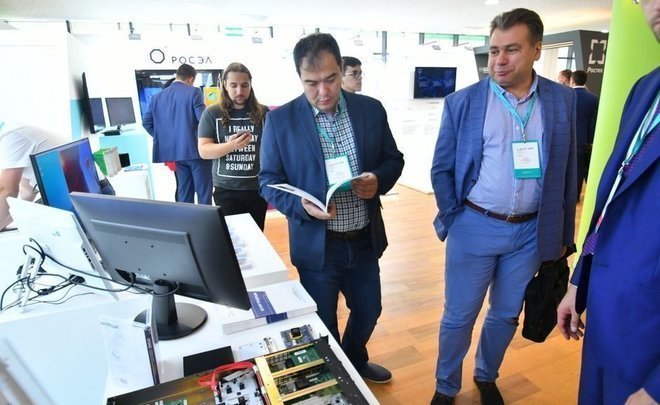Viktor Nikitin: ‘It is a disaster for a business to rebuild and invest billions again’
How Russian companies are experiencing the withdrawal of foreign IT vendors and what will happen next

After the withdrawal of foreign companies, many enterprises of the country were left without Western vendors. Russian developers are creating domestic software, but the business, according to experts, suffers due to the restructuring of internal processes and training of employees to work on new, unknown systems. Companies have not yet fully felt all the consequences of these changes, since the full-scale introduction of domestic technologies has not yet begun. Viktor Nikitin, CEO of Bipium IT company, tells about the difficulties that businesses are going to face in the near future, which tools will help survive the transition to Russian software less painfully, and what awaits the industry in the coming years in the author's column for Realnoe Vremya.
How software import substitution is going in Russia
February 2022. Immediately after the withdrawal of foreign IT companies, local enterprises did nothing. A surge in activity began about a month later. Entrepreneurs realised that they were “cut off” from the products of Western vendors — there was no opportunity to update, there was no support, and it would not work by usual schemes.
Spring 2022. Realising the loss of suppliers, the business turned its attention to the domestic market, entrepreneurs began to look closely at Russian vendors. They sent requests, were interested, and were looking for options for replacing foreign systems. When vendors noticed such an influx, they began to adjust to the demand for substitution systems and position themselves accordingly.
Summer 2022. There were a lot of substitution proposals on the market, but the companies did not have the strength to understand the new systems, so their activity subsided. Everyone began to hope that the situation would quickly improve and everything would return to its former course.
Enterprises had been investing in their development for decades, and had allocated billions of rubles for this. It is a disaster for a business to rebuild and invest so much again, to attract new people. Everyone realised what switching to Russian systems was fraught with. Businesses were waiting for the situation to change — but it did not. Moreover, it only worsened — even more products left the market, some products were simply shut off, the systems stopped working.

Autumn 2022. Entrepreneurs realised that the story was long-running and it was necessary to find some other options. Also, everyone realised that the introduction of a new product would take at least 2-3 years. The search and selection of new domestic suppliers that could replace the software began.
Winter 2022. Replacement costs are huge — not only the purchase of the product itself, but also hiring, training employees to work with these products. The price of a mistake is the whole company. In this regard, enterprises started to run several pilot projects with different vendors to decide who is more profitable, with whom it is easier.
Present moment. The companies are finishing the cycle of pilot projects. They choose the most convenient vendors and plan to fully switch to domestic software in 2024. Naturally, this transition will not happen immediately, it will be possible to completely replace it only in 10-15 years.
Forecasts. Next year, companies will start implementing these systems, trying to migrate data from one system to another. There will be a very painful transition of employees using these systems. The next stage will be associated with the transition and abandonment of some functions, since the product cannot fully repeat the previous one. Attempts to switch to domestic software will begin, and for this reason, organisational changes will occur.
There will be a norm that other enterprises will adopt. Now those who follow the path of import substitution have nothing to be guided by. There is no successful experience of other companies, because in most segments the market was occupied by Western software. After everyone starts switching, there will be a successful practice that others will have the opportunity to focus on. Vendors' rating will appear. It's going to hurt.
Most likely, when companies face the difficulties of business restructuring, they will begin to increase their IT staff. This is due to the need to support new systems. Programmers, analysts, and developers will be needed again. The situation with a shortage of IT specialists will worsen in the market.

Key problem: there are no copies of foreign systems
What is a business ideally looking for? They are looking for a copy of a foreign product, for which they do not need to adjust again, research again, retrain employees, rebuild the organisation's processes.
IT very much dictates the work of the whole company. An IT product cannot adapt simultaneously to the new demands of the enterprise. As a rule, IT dictates how the processes will be built. That is, now businesses do not want to rebuild their work, so they are looking for copies of foreign old systems. It is not difficult to replace the product physically — just reinstall the system. It's hard to re-master it. It is impossible to fully replace the product without rebuilding the company.
Import substitution is underway, but it is very painful. Meanwhile, there are no vendors on the market who repeat foreign products bluntly. Why? Because Western products are old in many ways. They were developed long ago. Of course, they were improved, but they were laid 15-20 years ago and are morally outdated.
Since companies began to implement systems when they were still relevant, it is difficult to rebuild now. The Russian market has developed a lot now, and new, relevant products are emerging, but this makes it difficult for businesses to rebuild. No one will make those products that were developed 15-20 years ago.
Now it is most difficult for large enterprises whose activities were based on one large monolithic system that covered many company processes at once. It is difficult to replace this system, because it was one for several functions, and they need to replace everything at once. In this case, it will not work out to work in pieces.

Solution: how to choose alternatives to foreign systems
When replacing an IT system, companies have several options:
- implement the finished product. They can choose a ready-made system on the market. It was created by developers not for a specific company. It originally incorporates a model of how the organisation-buyer of the system should work. Accordingly, the company should adapt to such product;
- create your own IT system. If a business has its own vision of internal processes, it creates a system for itself. They hire developers, and they create software for decades. Only very large organisations can afford this, which, in fact, become IT companies;
- build/create a low-code system. There is also an intermediate option — low-code. It does not require its own developers, in this case the system is assembled, as a constructor, from pre-configured functions. This solution is something between a monolithic ready-made slab, which is offered when buying a system, and its own development with the involvement of a large budget and a staff of programmers.
Before implementing new systems, businesses will first need to test these systems. However, not in all of the described cases it will be possible to do this easily. So, when purchasing a finished product, they will have to rebuild all the internal processes of the organisation, and it will take years and a lot of money to create a system from scratch. Therefore, the best option for solving the issue is still low-code. On such systems, it is possible to quickly assemble a pilot project — to test and subsequently scale.
Low-code is a method of software development in which the system can be assembled using ready-made scripts. There is no need to learn programming for this. At the moment, many domestic companies are following the path of increasing flexibility through the use of this method.
Reference
The author's opinion may not coincide with the position of the editorial board of Realnoe Vremya.